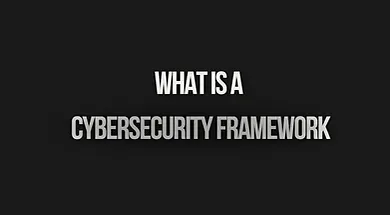A cybersecurity framework is a structured set of guidelines, standards, and best practices designed to help organizations manage and mitigate cybersecurity risks. The purpose of such a framework is to create a systematic approach to identifying, assessing, and addressing security threats, ensuring that an organization’s data, systems, and networks are adequately protected against cyberattacks. Cybersecurity frameworks are particularly useful because they offer a common language for discussing security requirements, helping organizations across different industries to implement effective protection measures.
Importance of Cybersecurity Frameworks
In the modern digital landscape, cyber threats are constantly evolving. Businesses and organizations of all sizes are exposed to a wide range of cyberattacks, including data breaches, ransomware, phishing, and insider threats. As cybercriminals continue to innovate, organizations need to stay one step ahead by ensuring they have the right defenses in place. This is where cybersecurity frameworks become essential.
By providing a structured approach to security, these frameworks help organizations ensure compliance with legal and regulatory requirements, protect sensitive data, and safeguard their reputation. Without a clear cybersecurity plan, businesses risk financial loss, operational disruptions, and damage to their customer relationships. A cybersecurity framework also helps organizations allocate resources effectively and make informed decisions about their security investments.
Key Components of Cybersecurity Frameworks
Most cybersecurity frameworks are built around several key components that together form a comprehensive approach to managing cybersecurity risks. These components typically include:
- Identify: This involves understanding the organization’s current security environment, including its assets, risks, and vulnerabilities. Organizations need to identify what critical data and systems they need to protect, as well as the potential threats they face.
- Protect: Once risks are identified, organizations implement safeguards to protect their assets. This includes deploying firewalls, encrypting data, and securing access through strong authentication methods like multi-factor authentication (MFA). Employee training is also a critical aspect, as human error is often a weak link in security.
- Detect: This step focuses on developing the ability to quickly identify when a cyber threat or security incident occurs. Organizations must implement monitoring systems that can detect suspicious activity or breaches in real time. Continuous monitoring and analysis of network traffic, along with vulnerability assessments, are key to detecting potential threats early.
- Respond: In the event of a cyberattack or security breach, it is crucial to have a plan in place to respond quickly and efficiently. This involves notifying the appropriate personnel, containing the breach, and minimizing the damage. Clear communication and incident response teams are vital in this phase.
- Recover: After an incident, organizations need to recover as quickly as possible to ensure continuity of operations. This includes restoring affected systems, investigating the breach, and implementing lessons learned to prevent future incidents.
Popular Cybersecurity Frameworks
Several well-established cybersecurity frameworks are commonly used across industries. These include:
- NIST Cybersecurity Framework: Developed by the National Institute of Standards and Technology (NIST), this framework is widely used in the United States. It is flexible, allowing organizations to customize it to their unique security needs, and is designed around the core functions of identify, protect, detect, respond, and recover.
- ISO/IEC 27001: This is an international standard that outlines best practices for information security management systems (ISMS). It is particularly popular in industries that deal with large amounts of sensitive data, such as finance and healthcare.
- CIS Controls: The Center for Internet Security (CIS) offers a set of critical security controls that organizations can implement to improve their cybersecurity posture. These controls are prioritized based on the most common and damaging threats.
Conclusion
In conclusion, a cybersecurity framework provides a strategic roadmap for organizations to safeguard their digital assets and maintain a strong security posture. By following a structured framework, organizations can better manage risks, respond to incidents, and continually improve their defenses against an ever-changin





It is good